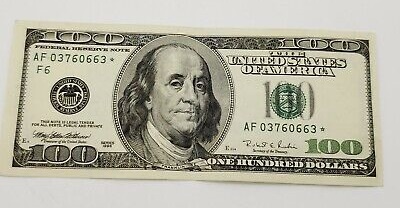The $100 bill is one of the most iconic denominations of United States currency. Known for its distinctive design and status as a high-value note, the $100 Federal Reserve Note plays a significant role in domestic and international markets. This article delves into the history, design, and significance of the $100 bill, focusing on the individual whose portrait graces its front.

The History of the $100 Note
The history of the $100 bill is intertwined with the broader history of American currency. First issued by the federal government in 1862, the $100 note has undergone numerous redesigns, reflecting changes in technology, security, and aesthetic preferences. Initially, the bill featured a portrait of a bald eagle and later included various allegorical figures before settling on the picture of Benjamin Franklin in 1914.
Benjamin Franklin: The Face of the $100 Bill
Benjamin Franklin, whose likeness appears on the $100 bill, is one of the most revered figures in American history. A polymath and a Founding Father, Franklin’s contributions to the early United States were vast, spanning science, diplomacy, and politics.
Franklin’s inclusion on the $100 bill is a nod to his invaluable contributions to the nation, particularly in drafting the Declaration of Independence and negotiating the Treaty of Paris, which ended the American Revolutionary War.
Franklin’s Legacy
- Inventor: Franklin was responsible for numerous inventions, including the lightning rod and bifocal glasses, demonstrating his ingenuity and commitment to practical solutions.
- Diplomat: As a diplomat, Franklin was crucial in securing French support during the American Revolution, pivotal to the colonial victory.
- Publisher: His work as a printer and publisher, most notably with Poor Richard’s Almanack, helped spread Enlightenment ideas in the colonies.
The Design Features of the $100 Bill
The design of the $100 note has evolved over time, incorporating advanced security features to prevent counterfeiting while maintaining aesthetic appeal. The current design, known as the “New Note,” was introduced in 2013 and includes several innovative elements.
Key Design Features
| Feature | Description |
|---|---|
| 3D Security Ribbon | A blue ribbon woven into the paper with images of bells and 100s that shift when the note is tilted. |
| Bell in the Inkwell | A color-shifting bell inside a copper inkwell on the front of the note. |
| Watermark | A faint image of Benjamin Franklin visible from both sides when held to the light. |
| Security Thread | A thread embedded in the paper that glows under ultraviolet light. |
The Role of the $100 Federal Reserve Note in the Economy
The $100 note is a common form of currency within the United States and a staple in the global Economy. As one of the most widely circulated U.S. denominations abroad, it is often used in international transactions and as a store of value.
In many countries, the $100 note is preferred for its stability and the perceived strength of the U.S. economy. This international demand underscores the importance of maintaining the note’s integrity and security.
Conclusion
The $100 bill, featuring the portrait of Benjamin Franklin, is a testament to the enduring legacy of one of America’s most influential Founding Fathers. The note remains a vital component of national and international monetary systems through its rich history and advanced design. As technology continues to evolve, so too will the design and security of the $100 bill, ensuring its continued relevance in a changing world.